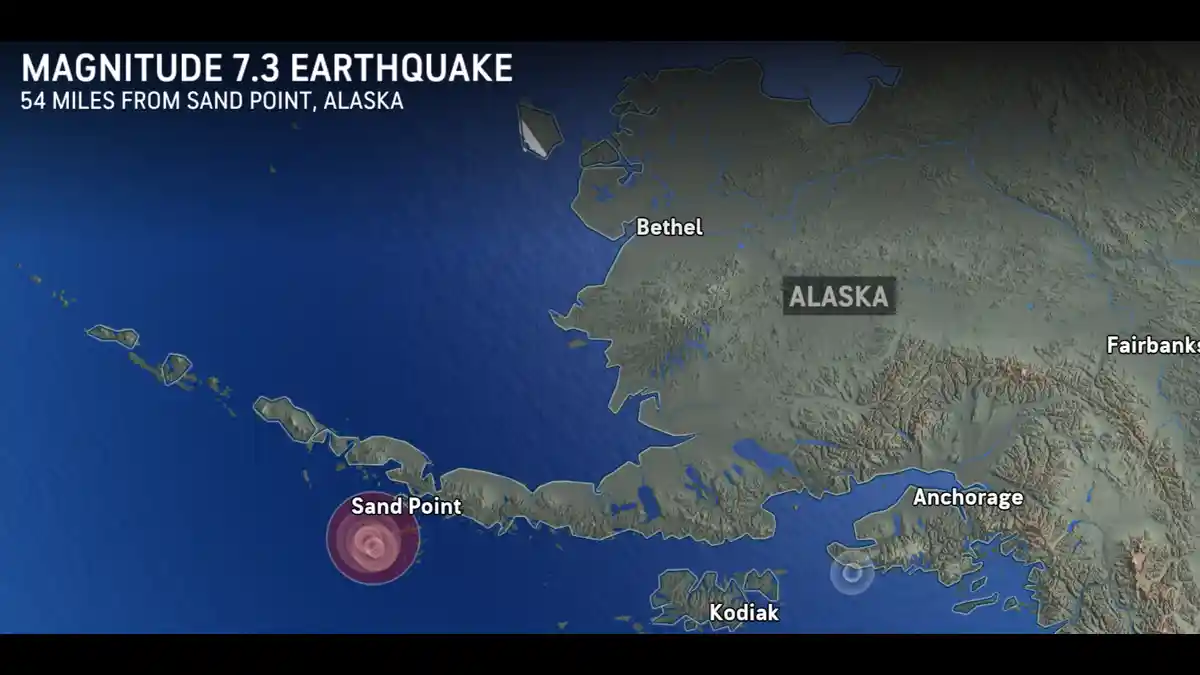A strong earthquake, measuring 7.3 on the Richter scale, occurred off the coast of Alaska’s Aleutian Peninsula. This happened on Wednesday, July 16, 2025, at about 12:37 PM local time (which was 8:37 PM GMT). The earthquake’s center was located roughly 54 miles (or 87 kilometers) south of Sand Point, a small island town. It was a shallow quake, happening at a depth of about 12.5 miles (or 20.1 kilometers) below the surface.
Tsunami Warning and Aftermath
Right after the quake, the National Weather Service in Anchorage and the National Tsunami Warning Center issued a tsunami warning for South Alaska and the Alaska Peninsula. This covered a 700-mile stretch of coastline from the Kennedy Entrance to Unimak Pass. Officials urged coastal towns like Kodiak, Sand Point, Cold Bay, King Cove, Homer, Seward, and Unalaska to prepare and move to higher ground.
However, within an hour, monitoring showed no large waves forming. Authorities downgraded and then canceled the warning by mid-afternoon. The highest water level observed in Sand Point was less than 2.5 inches (6.3 cm) above the normal tide.
Impact and Damage
No one reported any serious damage or injuries from the earthquake. A local shop in Sand Point, for instance, only had minor issues like some broken bottles and items that fell off shelves.
Also, information from tsunami buoys confirmed that no dangerous waves traveled across the North American coast. This means that states like Washington, Oregon, or California were not in any real danger from a tsunami.
Aftershocks and Seismic Activity
Following the main earthquake, smaller aftershocks occurred, including magnitudes 4.4 and 4.0 near Halibut Cove and Sand Point. The Alaska Earthquake Center detected nearly 40 aftershocks in the first three hours, with the largest being a magnitude 5.2.
This part of Alaska sits on the seismically active Pacific “Ring of Fire,” where the Pacific Plate moves under the North American Plate. This area has seen more earthquake activity recently, with five quakes of magnitude 7 or greater since 2020. The July 16, 2025, earthquake is part of this ongoing series.
Historical Context
Alaska has a history of powerful earthquakes, including the 9.2 magnitude earthquake in March 1964. That quake, the strongest ever recorded in North America, devastated Anchorage and caused a tsunami that affected the US West Coast and Hawaii. Scientists noted that while this recent event didn’t trigger a “megatsunami” like the famous 1958 Lituya Bay event (caused by a landslide), Alaska remains vulnerable to both large tectonic earthquakes and catastrophic landslides.








